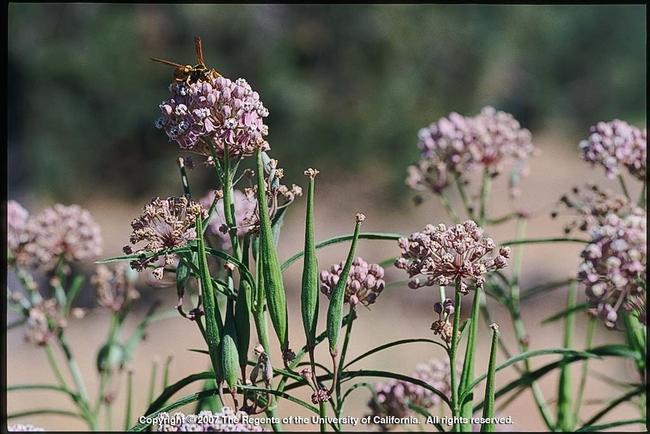
Milkweed
By Linda Lewis Griffith UCCE Master Gardener
Milkweeds are herbaceous plants in the genus Asclepias. There are over 140 species of milkweeds.
In 1753, Carl Linneus named the plant after Asclepius, the Greek god of healing. Native Americans used a poultice made from milkweed to treat snake bites.
All species contain a milky sap that is made up of 1 to 2 percent latex. Both the United States and Germany attempted to use milkweed as a source of rubber during World War II.
Asclepias plants can be toxic—even fatal-- to humans and animals. The sap of some species causes skin irritations. Sensitivity to the toxin varies with a person's age, weight, health and individual susceptibility. Potency even varies within a single plant depending on the season, which part of the plant is touched or ingested, and its stage of growth. Indigenous tribes from South America and Africa used arrows poisoned with milkweed for hunting and fighting.
The milkweed species native to the western United States is Asclepias fascicularis, or Narrowleaf Milkweed or Mexican Whorled Milkweed. It is a perennial shrub with a three-foot stem and long, narrow leaves. Several five-inch flower clusters occur from the upper leaf axils. Individual flowers are greenish-white, and may be tinged with purple. Long, slender pods form in July.
Narrowleaf milkweed is hardy and easy to grow. It requires full sun and is drought tolerant. While it is commonly found in parched plains, hills, valleys, roadsides and disturbed soil, it grows well in clay and boggy soils.
Narrowleaf milkweed is well known for its value to wildlife. Leaves are a primary food source for monarch caterpillars. The plant's toxins render the caterpillars and adult butterflies noxious to predators. Narrowleaf milkweed attracts large numbers of native bees. And, in the spring, the dead stems are used by orioles for building their nests.